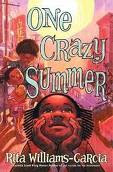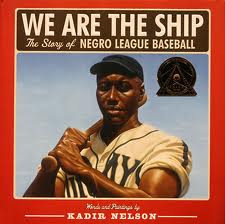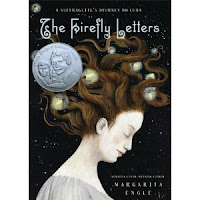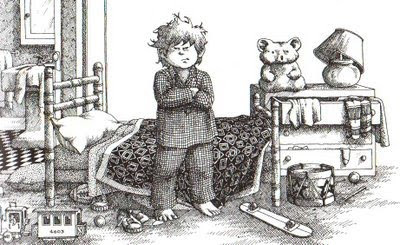
- Bibliography
Hale, Shannon & Hale, Dean. 2010. CALAMITY JACK Ill. by Nathan Hale. New York: Bloomsbury. ISBN 9781599900766.
- Summary
In this graphic novel interpretation of "Jack and the beanstalk," Jack is a born schemer who climbs a magical beanstalk in the hope of exacting justice from a mean giant and gaining a fortune for his widowed mother, aided by some friends including Rapunzel.
- Critical Analysis
Readers will relish this gleeful mix of fairy tale, adventure and romance. This sequel to the energetic Rapunzel’s Revenge focuses on Rapunzel’s sidekick, Calamity Jack and this time Rapuzel is the sidekick. This Jack has American Indian roots and is roguish without the cruel or arrogant undertones sometimes present in other stories. The full-color graphic novel starts with a history of Jack’s criminal history, where every caper, though marginally successful, ends with him in more trouble than he bargained for, including the complete destruction of his mother’s home and business. As in the book Rapunzel’s Revenge, a lot of action combines with clever plotting, in text allusions, and a bit of romance to produce a fully satisfying read.
Nathan Hale’s graphic design is exceptionally well laid out and easy to follow, even for those still getting the hang of the format. The full-color artwork has depth, energy, and plenty of exaggerated violence and humor. The story stands alone in its focus on Jack and his troubles, but it will entice readers to pick up Rapunzel’s Revenge to see how he teamed up with the feisty Rapunzel in the first place. The drawings are done in a clear and energetic style which suits the steampunk city as well as the Wild West. Fans of the previous book will be happy to see this new installment, which should handily garner new fans as well.
- Awards and Review Excerpts
- AWARDS -
Booklist Great Graphic Novels for Teens, 2011 ; American Library Association
- REVIEW EXCERPTS -
CHILDREN’S LITERATURE review: “A fantastic story that keeps the fun tone of Rapunzel’s Revenge while also breaking new ground, Calamity Jack shows how good storytellers can pay homage to classic fairytales without being limited by familiar plots.”
VOYA review: “In the genre of revisionist fairytales, Jack's tales are among the most re-told; however, the Hales provide a truly refreshing and fun version of the rascal.”
- Connections
Create your own graphic novel using a fairytale character in new adventures.
Read Rapunzel’s Revenge and compare Jack and Rapunzel’s characters/attitudes in the two stories.
Have students turn a fractured fairy tale into a graphic novel of their own design.

















